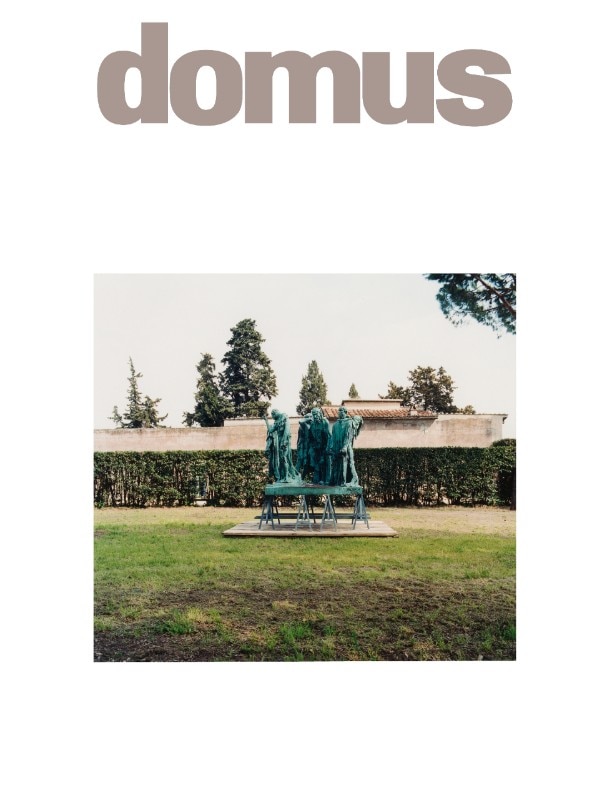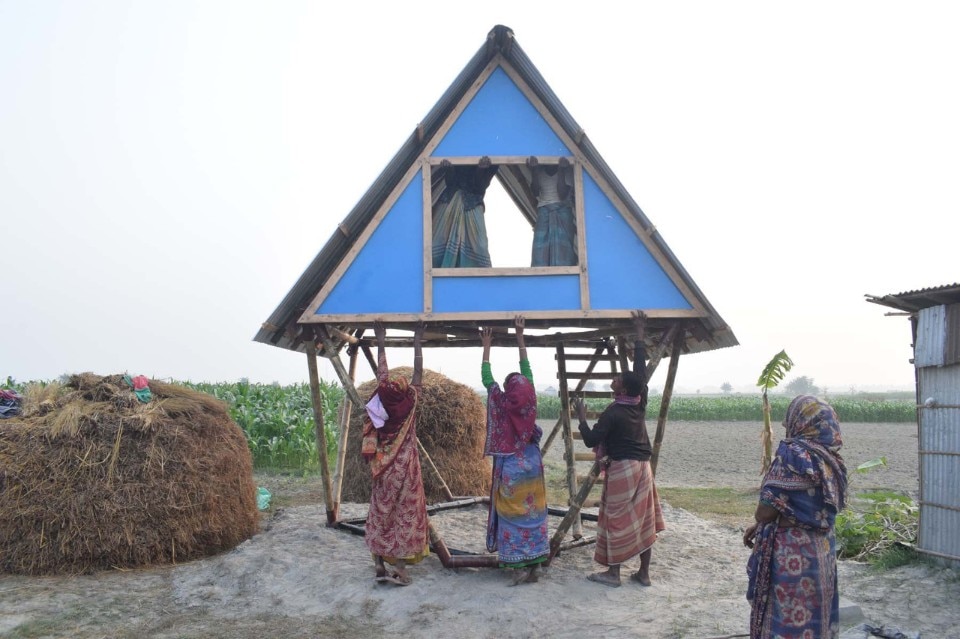We live in a constantly shifting world. Ideas of stasis and permanence have been thrown out of the window. The multiple crises we experience today – climatic, financial, socio-economic and political, or of cultural identity and values – heighten our awareness of instability. One can argue that the only constant aspect of our lives is change itself. But the pace of change has accelerated; the abruptness of violent interruptions in our lives as a consequence of these multiple critical situations shows us that we are at a juncture where we need to rethink the fundamental assumptions of our cities, buildings, designs and our roles in society. We need to stop understanding these as static “things”, or distinct objects and spaces.
As Carlo Rovelli writes: “The entire evolution of science would suggest that the best grammar for thinking about the world is that of change, not of permanence. Not of being, but of becoming. We can think of the world as made up of things. Of substances. Of entities. Of something that is. Or we can think of it as made up of events. Of happenings. Of processes. Of something that occurs. Something that does not last and that undergoes continual transformation, that is not permanent in time.”¹ Challenging the thinking around mutability, adaptive potential and the transformation of our context is essential.
What we have today is all built with obsolete presumptions. We should be asking how we can approach this problem when these issues themselves will continually change: cities will continue to be redefined and reoccupied while matters of democratic inclusivity and justice will constantly be questioned and updated. The idea of “temporal” proposes that, instead of focusing on spaces and objects, we should turn our attention to “time” as the other essential component making our lives work. We are always in motion with time; the idea of “where” must be associated with “when”.
We need to rethink the fundamental assumptions of our cities, buildings, designs and our roles in society. We need to stop understanding these as static ‘things’, or distinct objects and spaces.
Time-keeping methods were devised as far back as 3,500 years ago by the Egyptians. With mechanisation in the 19th century, the dictates of time allowed the economy to function. “The clock, not the steam engine, is the key machine of the modern industrial age,” wrote Lewis Mumford in 1934. Henri Bergson proposed two different times: “objective time” tracked by mechanical means, and “lived time”, the duration of time of human experiences. As Rahul Mehrotra shows us in this issue of Domus, if time became the focus of our city-building, we could unlock the potentials of architecture as an ephemeral medium for urbanism.
Fredric Jameson, writing on the processes that define our economies and ontologies, notes that we are part of a “world that is still organized around two distinct temporalities: that of the new industrial big city and that of the peasant countryside… one of the great themes which has conventionally been identified as a dominant in literary modernism – namely temporality itself, and that ‘deep time’ that Bergson thought he could conceptualize… – is very precisely a mode in which this transitional economic structure of incomplete capitalism can be registered and identified as such”.²

Time dictates our cities, economies, environments and ourselves; it should be the strategic design tool we use to navigate the waves of the uncertain as we vigilantly observe the diverse patterns of society and environment. Thinking with the temporal promises to be a game changer if we are to survive in this world where disasters are increasing in number and frequency and affecting a large proportion of humanity. Instead of focusing on shapes, forms and outlines, why not shift our focus to the movements, events and processes that all depend on prescribed or assumed duration? Thinking temporally may, at times, offer direct solutions to a current condition, or at other times become a planning strategy that enables, for example, changing lifestyles, such as the alternative formations and definitions of families, or temporary installations that address the essential and acute needs of a populous.
In this issue, we feature architects, designers and artists who have actively confronted head-on, with a notion of the temporal, the most precarious and challenging conditions facing humanity. The World Bank estimates the number of refugees globally rose to 35.3 million in 2022 – an increase of nearly 8 million from the previous year. This number has nearly tripled in a decade. Marina Tabassum, along with the non-profit she co-established, FACE, is addressing the refugee crisis in Bangladesh for the persecuted community of the Rohingya, who were forced to migrate from Myanmar in massive numbers, making them one of the world’s largest stateless populations.
Time dictates our cities, economies, environments and ourselves; it should be the strategic design tool we use to navigate the waves of the uncertain as we vigilantly observe the diverse patterns of society and environment.
Shigeru Ban is working to alleviate the growing refugee crisis in Ukraine, designing and constructing shelters and partition systems. He is also encouraging the timber industry in Ukraine’s municipalities, so that business can continue during the war and the industry can be ready for reconstruction. Alejandro Saldarriaga’s temporary structures in Bogotá, Colombia, take inspiration from the Colombian literary tradition of magical realism to find emotional continuity during the height of pandemic instability. WORKac has designed refined spaces for community programming to create a similar continuity across Mexico City.
In Los Angeles, where the city is experiencing an exponential increase in migration, Michael Maltzan invites the community to inhabit the city’s new infrastructure. Shahzia Sikander’s artwork plays on the temporality of installation to embody the systemic presence of gender and racial inequality. In Ghana, DK Osseo-Asare is investigating alternative models to convert wasted materials into new economic streams and build a new business platform and marketplace. His structures are based on his research on Buckminster Fuller and resonate on geodesics in space and time. “A geodesic is the most economical relationship between any two events,”³ said Bucky. Or, as Stephen Hawking explained: “Lines are geodesics on the flat plane, and great circles are geodesics on the surface of the earth…. The geodesics in four-dimensional space-time correspond to lines in three[1]dimensional space.”⁴
The lines of space and time are taken up by J. Yolande Daniels in her exploration of the Black City Astrolabe and the networked possibilities for African diasporic settlements. Temporal aspects are further examined in the essays by Farshid Moussavi and Jenny French, to investigate in very different ways the conditions of housing, home and comfort. We are constantly evolving physically and creatively, never stopping for a moment. Philosophers and scientists agree that time is continuous, and while it may be in different states and shapes, the idea of continuous time makes our physical world function. In our short life on Earth, how we start to design in a way that is open to changes, and how we appreciate and understand all of our existence as temporary, will have the greatest impacts on our lives and help us to navigate each new crisis that arises. We are all in a moment of “becoming” together for the purpose of making a better common future.
1. Carlo Rovelli, The Order of Time, Riverhead Books, New York 2018. Translation by Erica Segre and Simon Carnell, p. 97
2. Frederic Jameson, A Singular Modernity: Essay on the Ontology of the Present. Verso, New York 2002, p. 142
3. Amy C. Edmondson, A Fuller Explanation: The Synergistic Geometry of R. Buckminster Fuller, EmergentWorld Press. Pueblo, Colorado 2007, p. 259
4. Stephen Hawking and Leonard Mlodinow, The Grand Design. Bantam Books, New York 2010, p. 102
Opening image: Marina Tabassum Architects, community work in Kurigram, Rangpur. The communities living on the chars have learnt the construction techniques to build Khudi Bari, structures with a reduced footprint that can be packed up and moved. Photo © Afsary Islam Toma







.jpg.foto.tbig.jpg)
